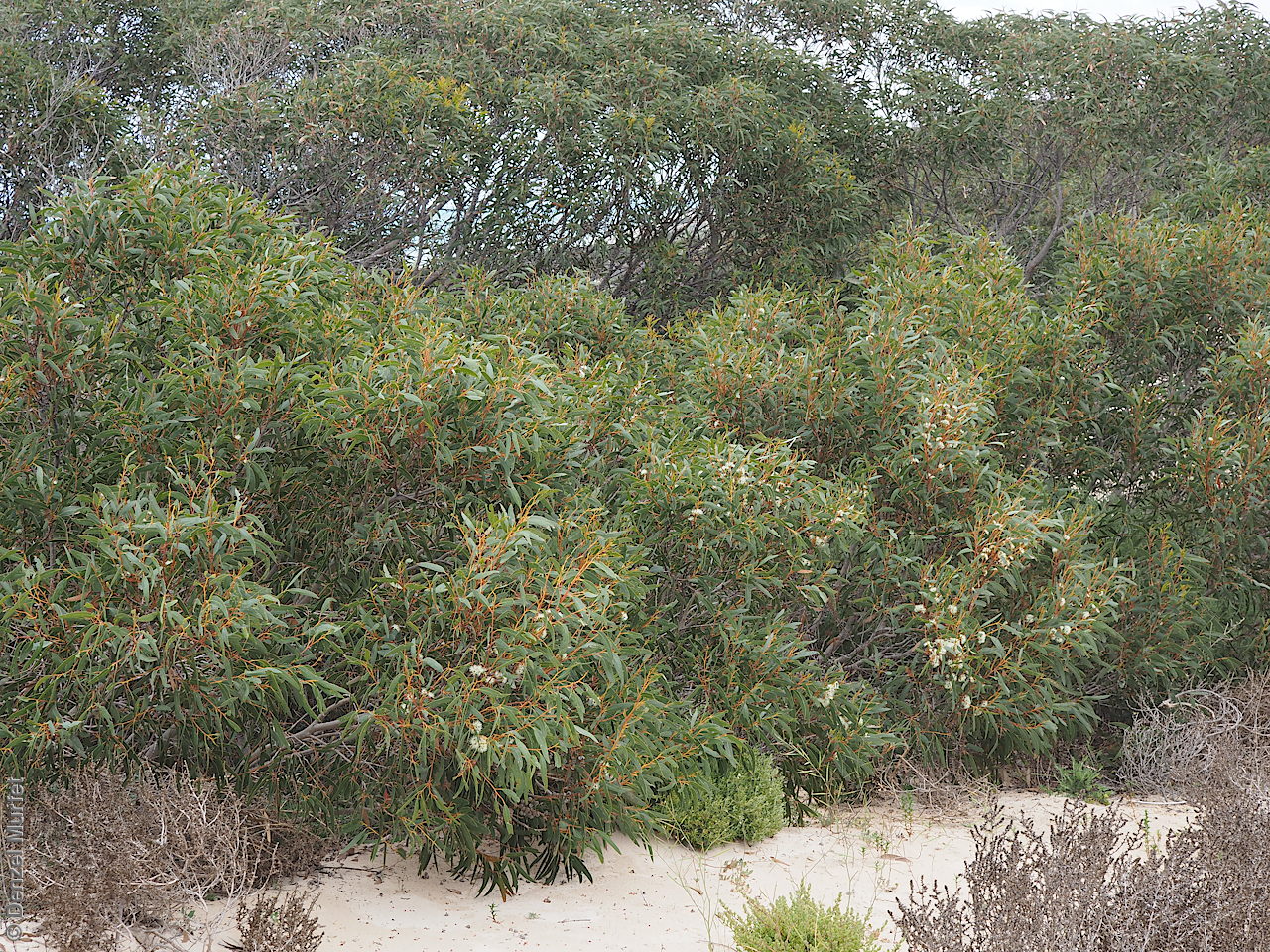
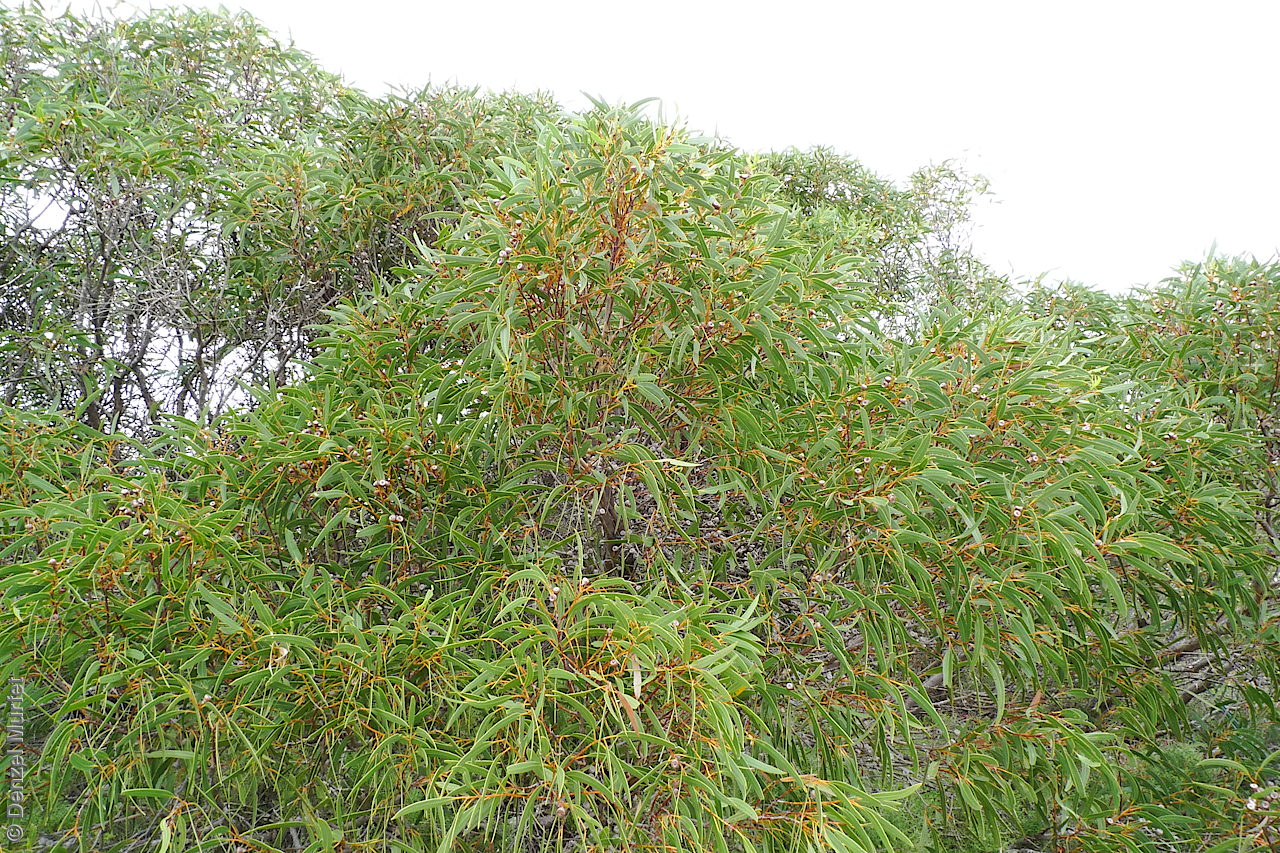
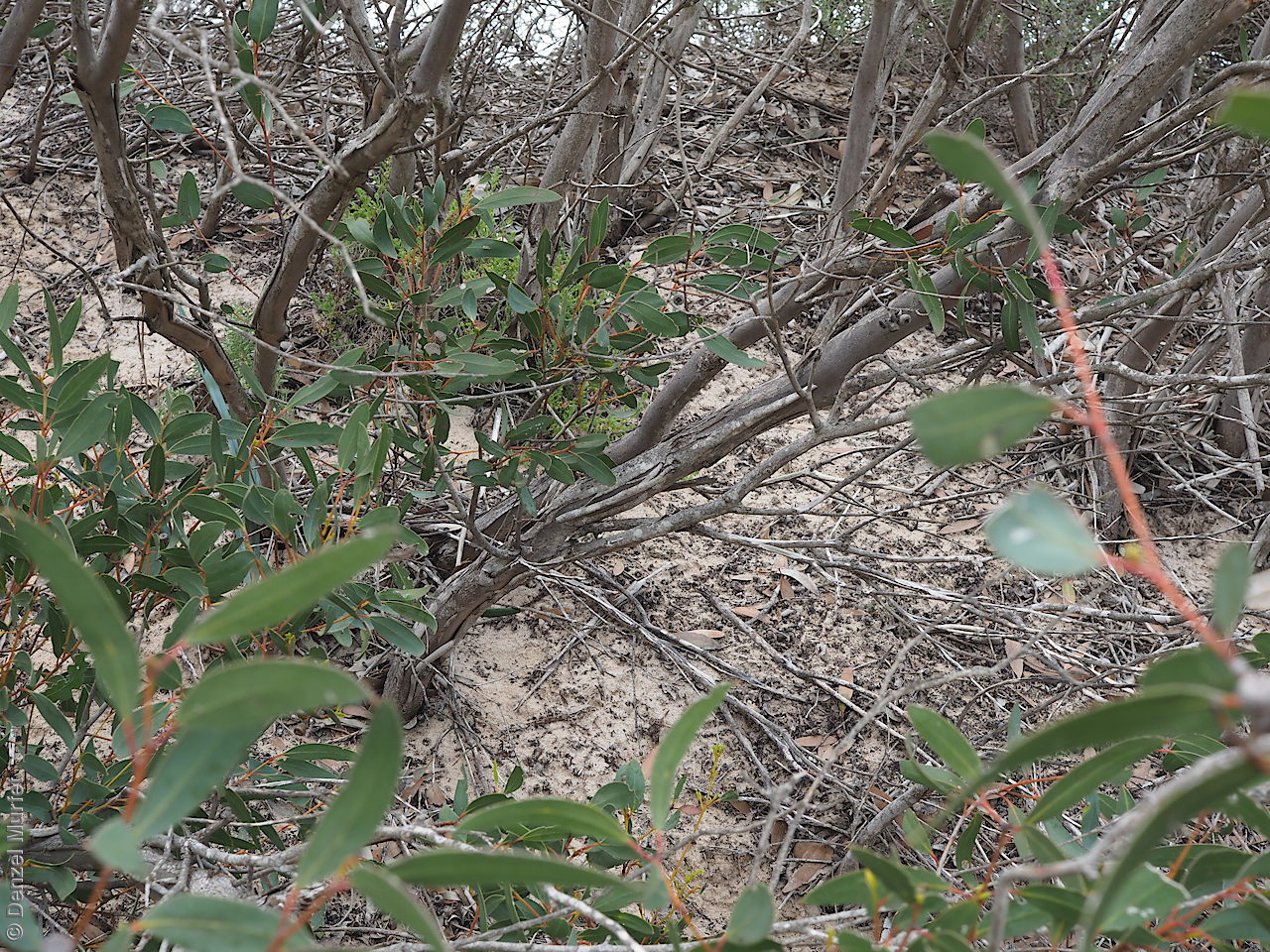
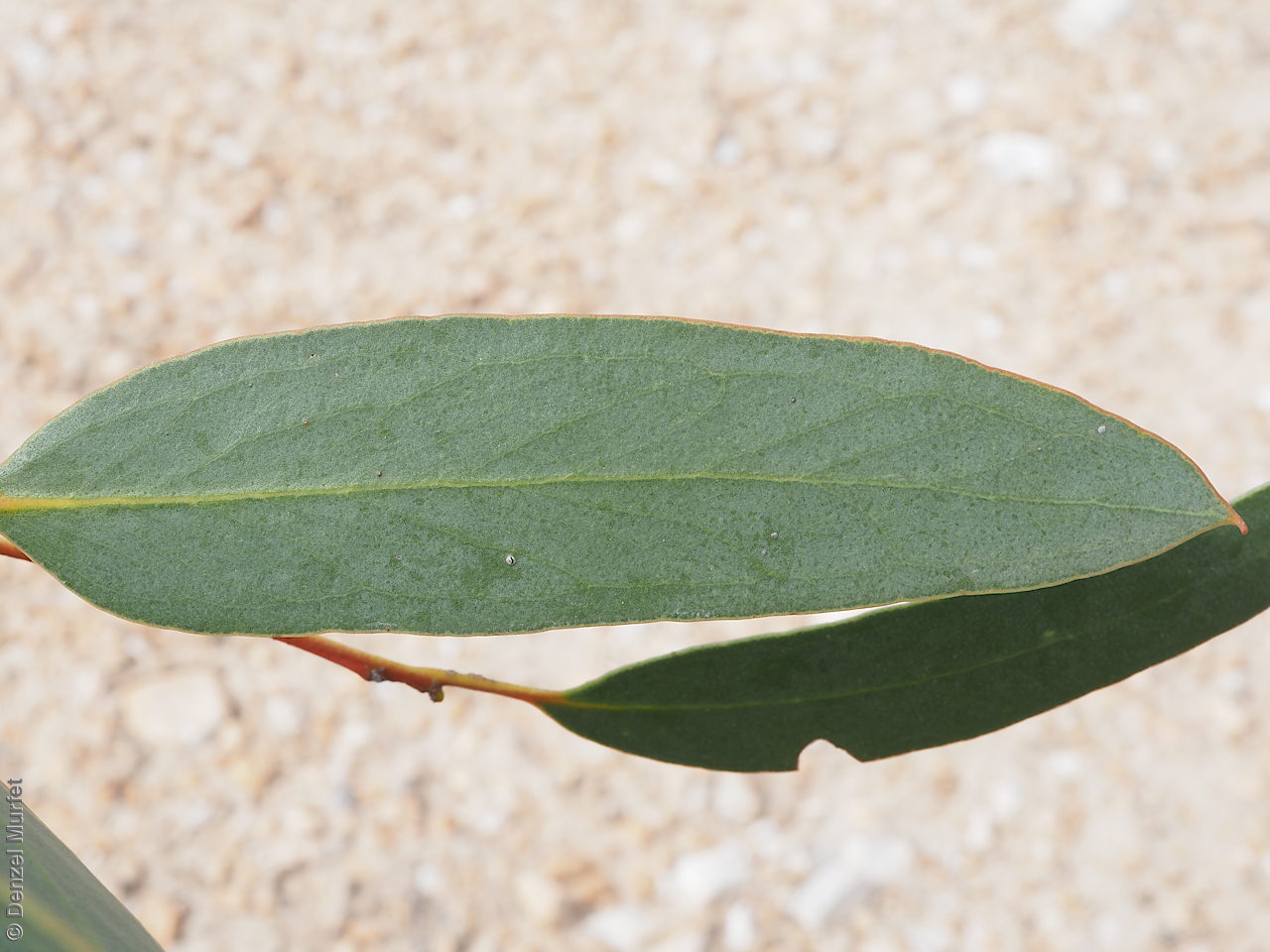
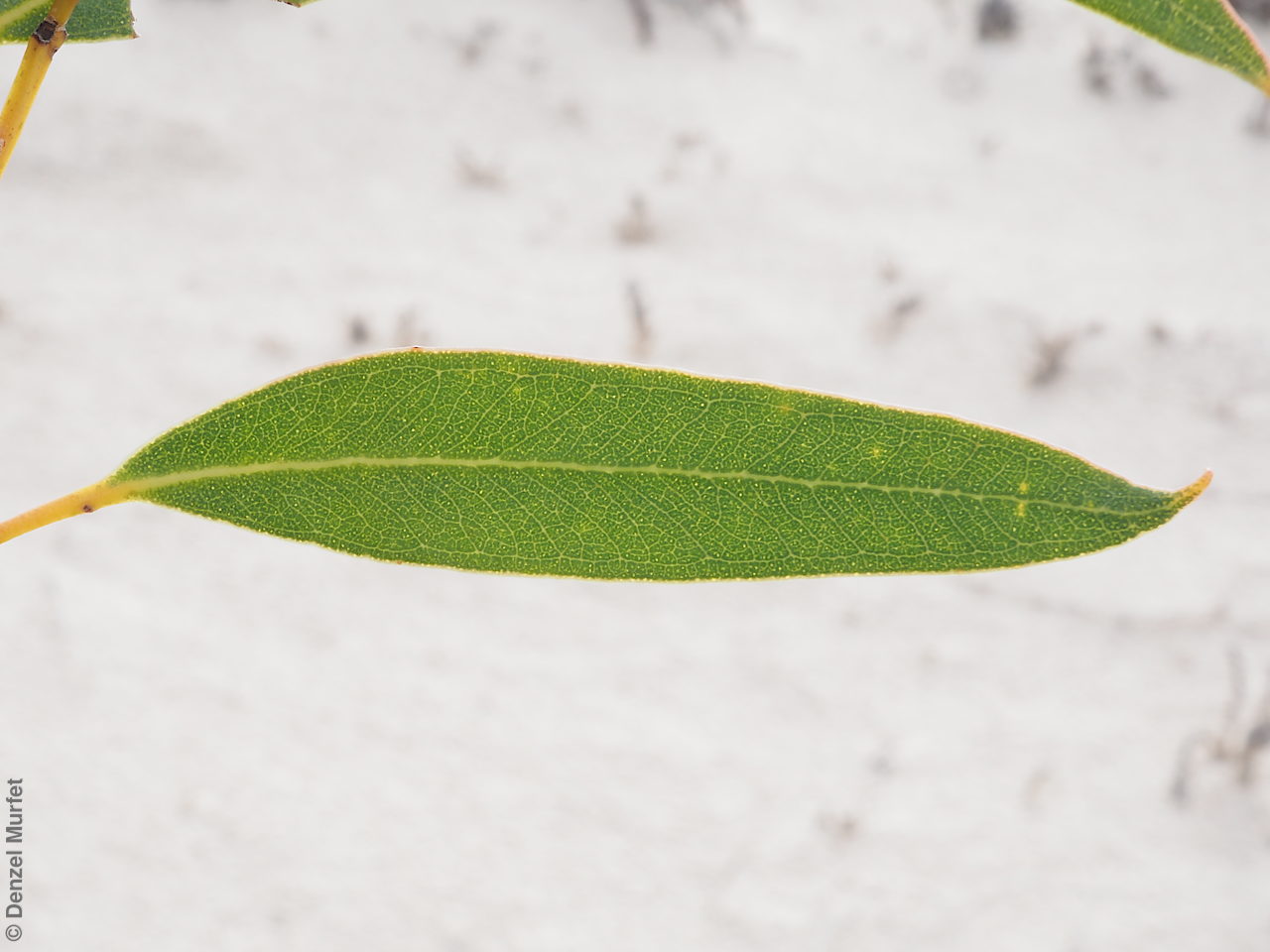
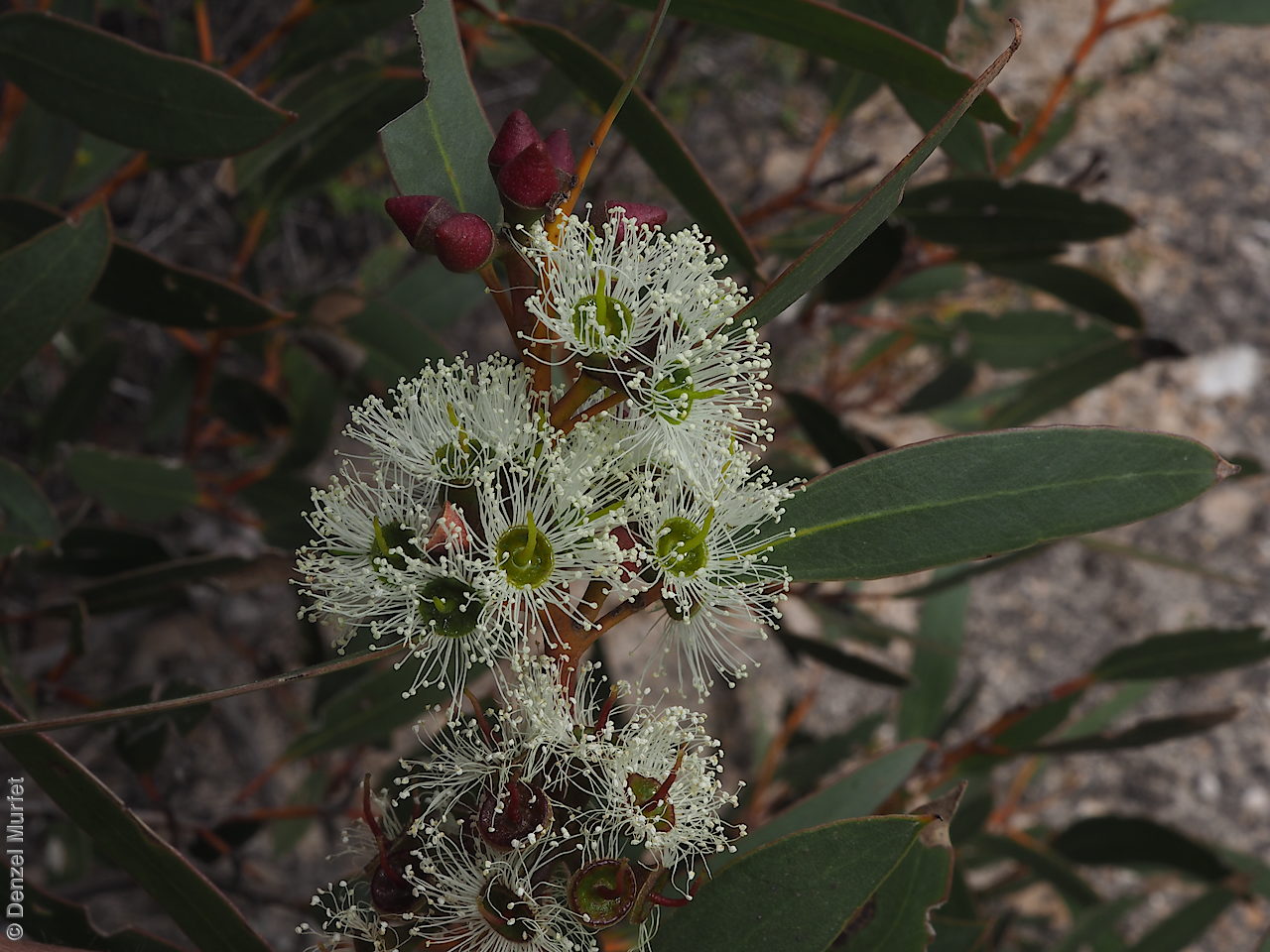
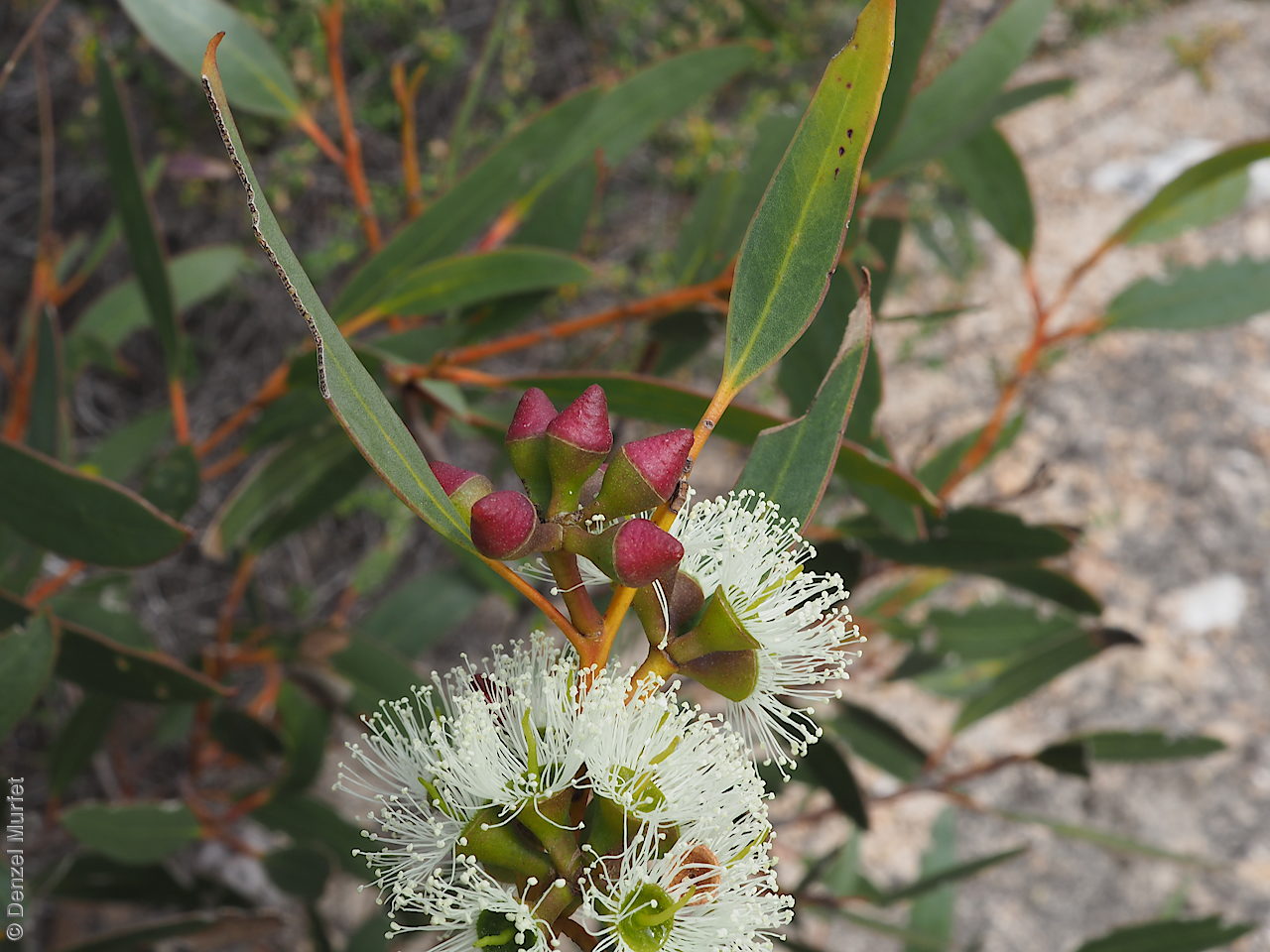
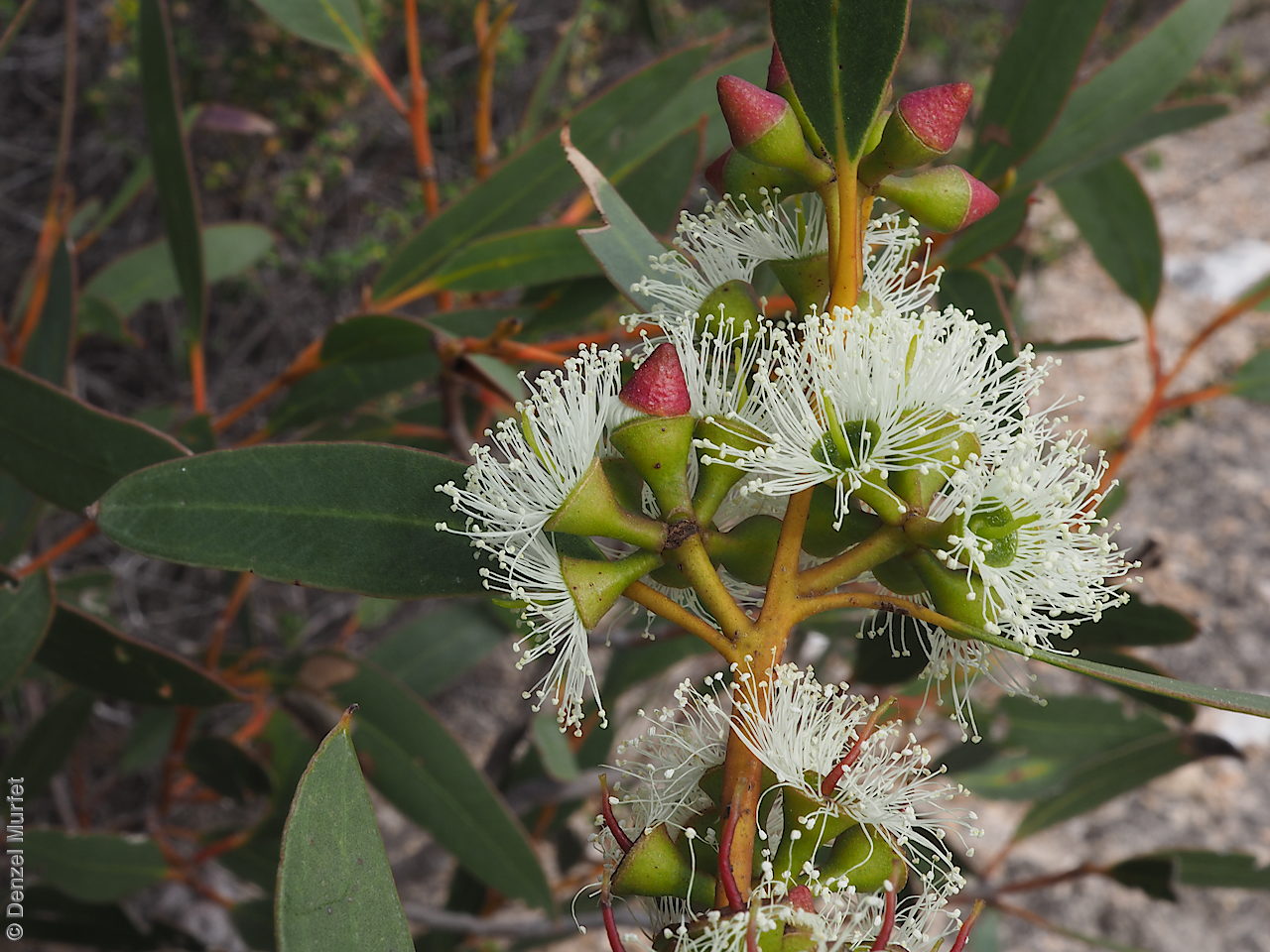
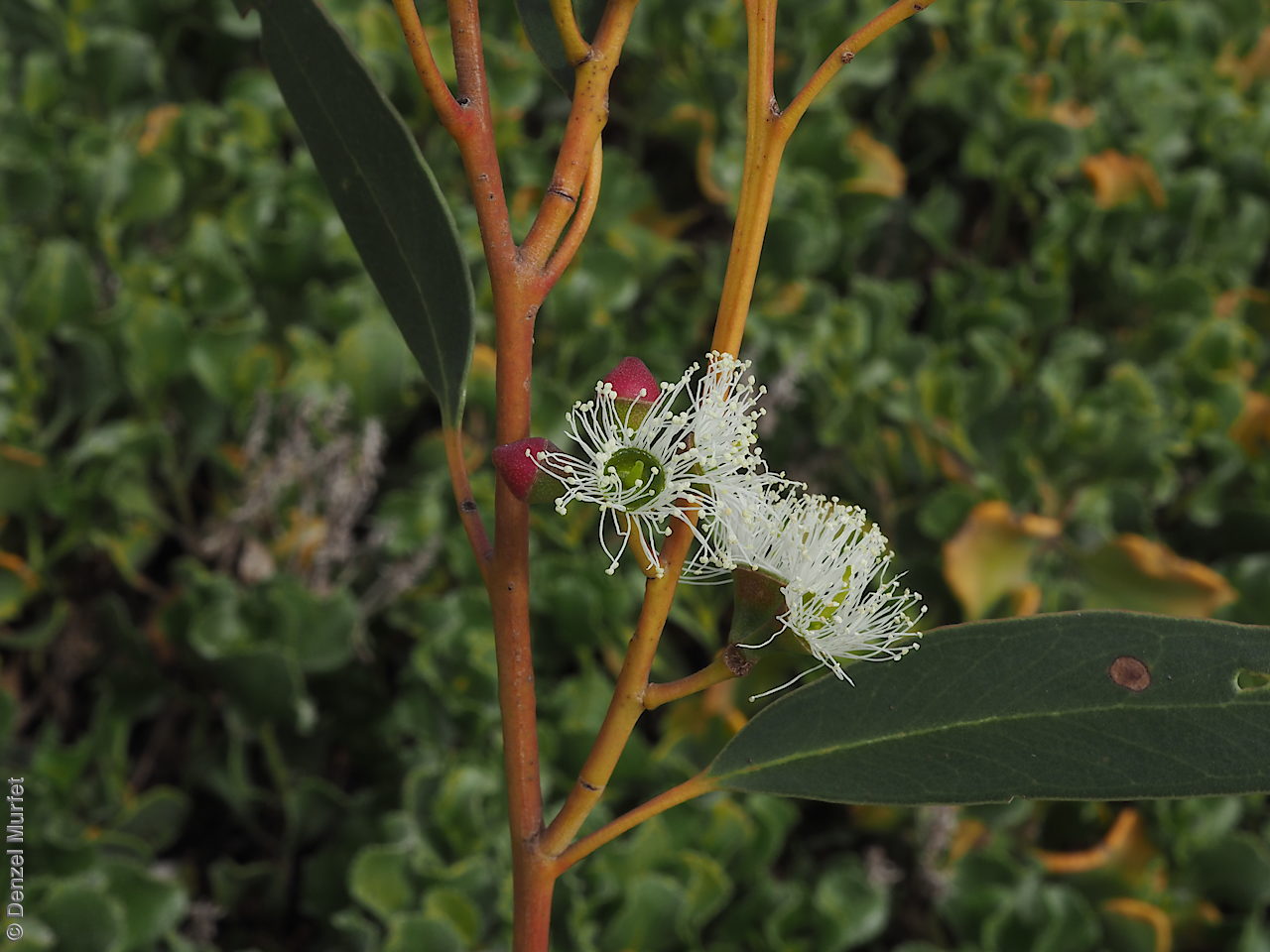
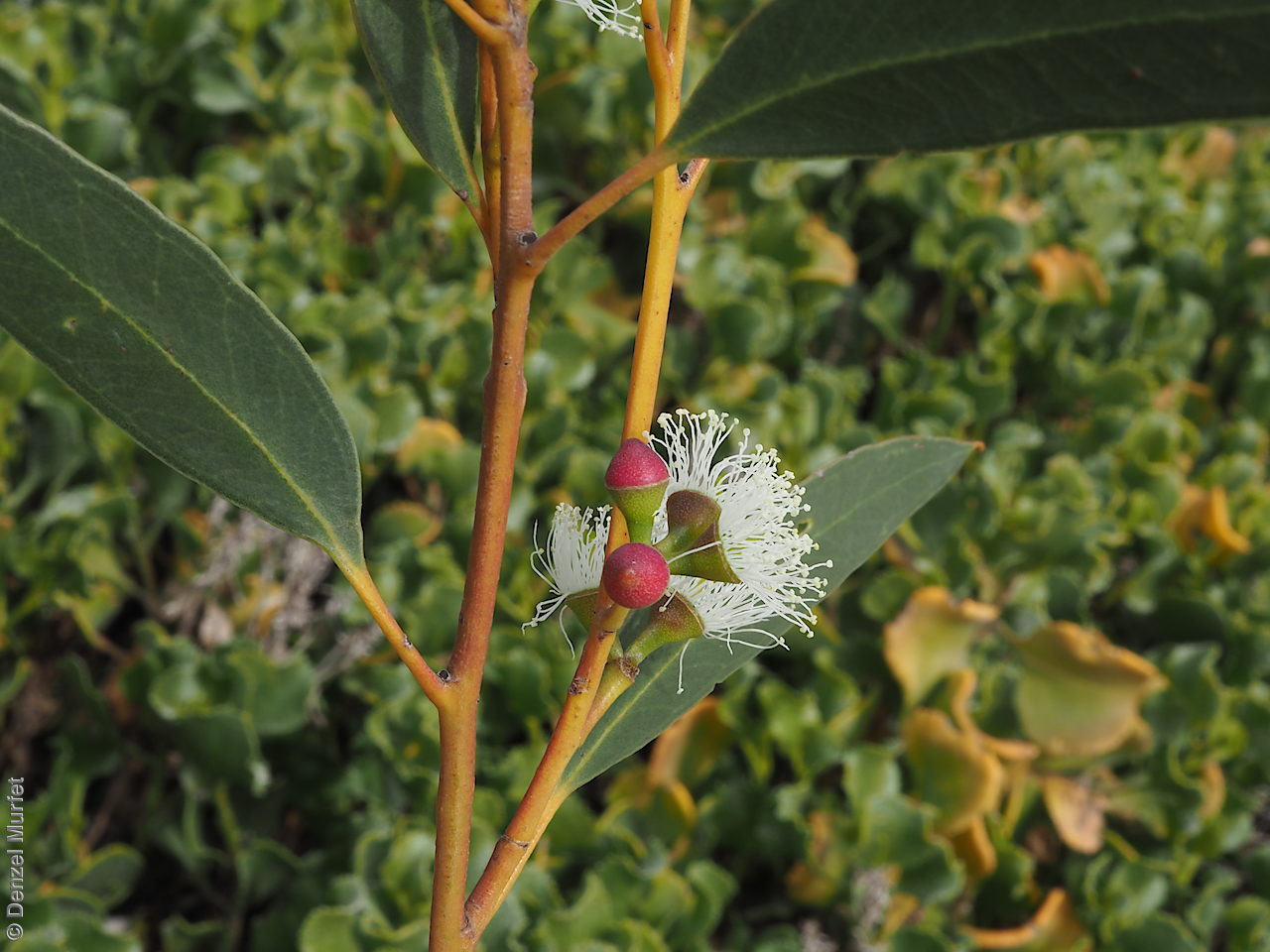
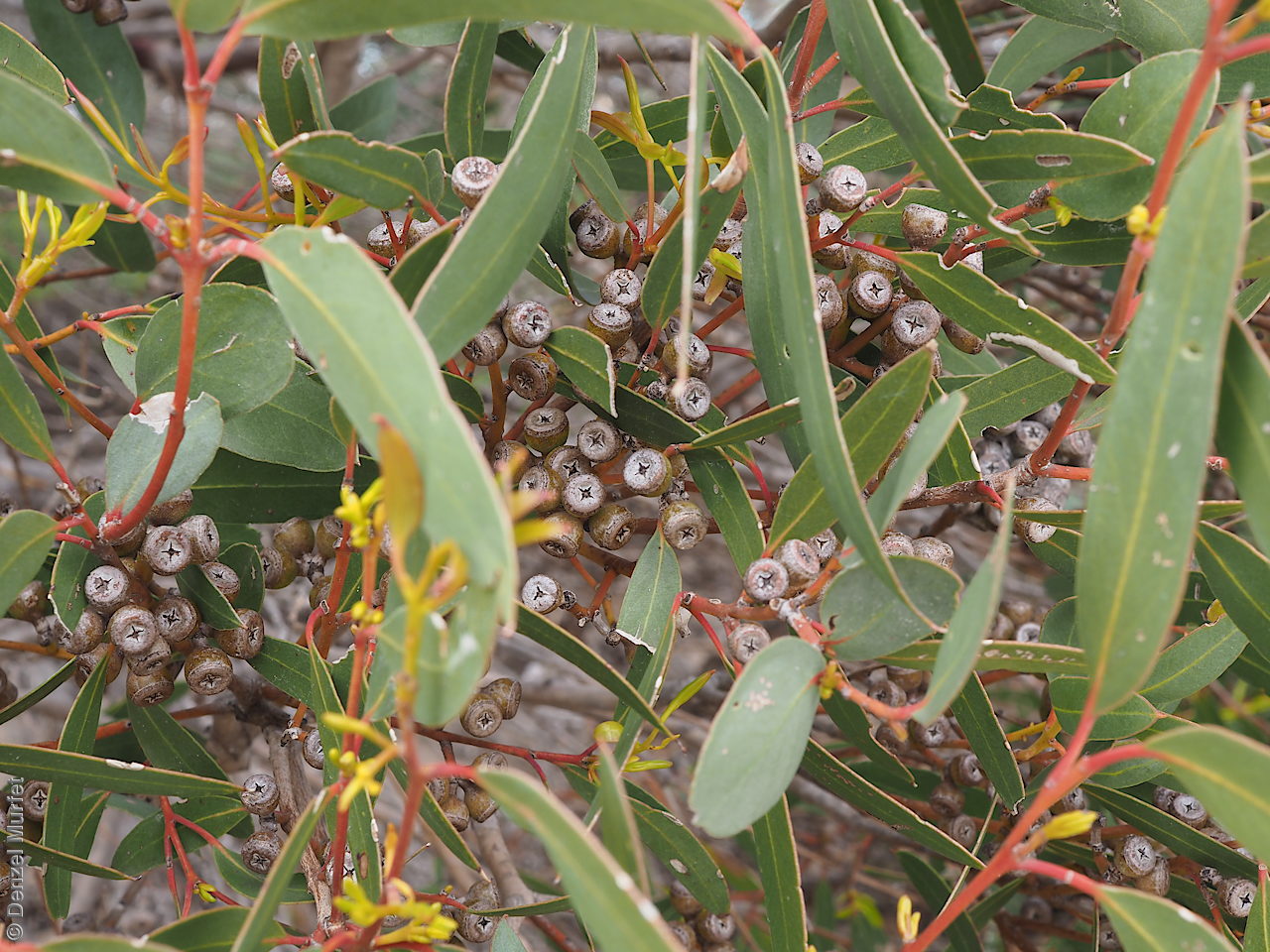
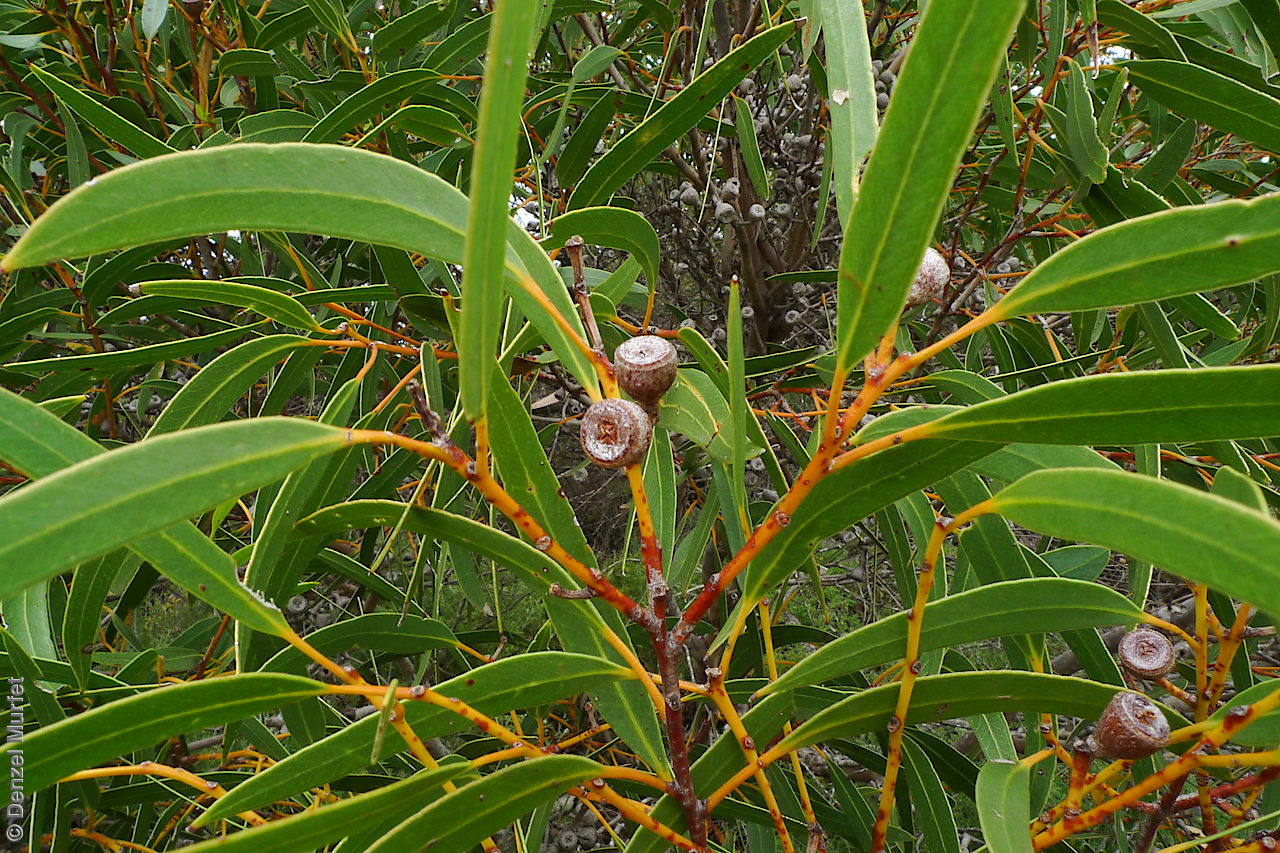
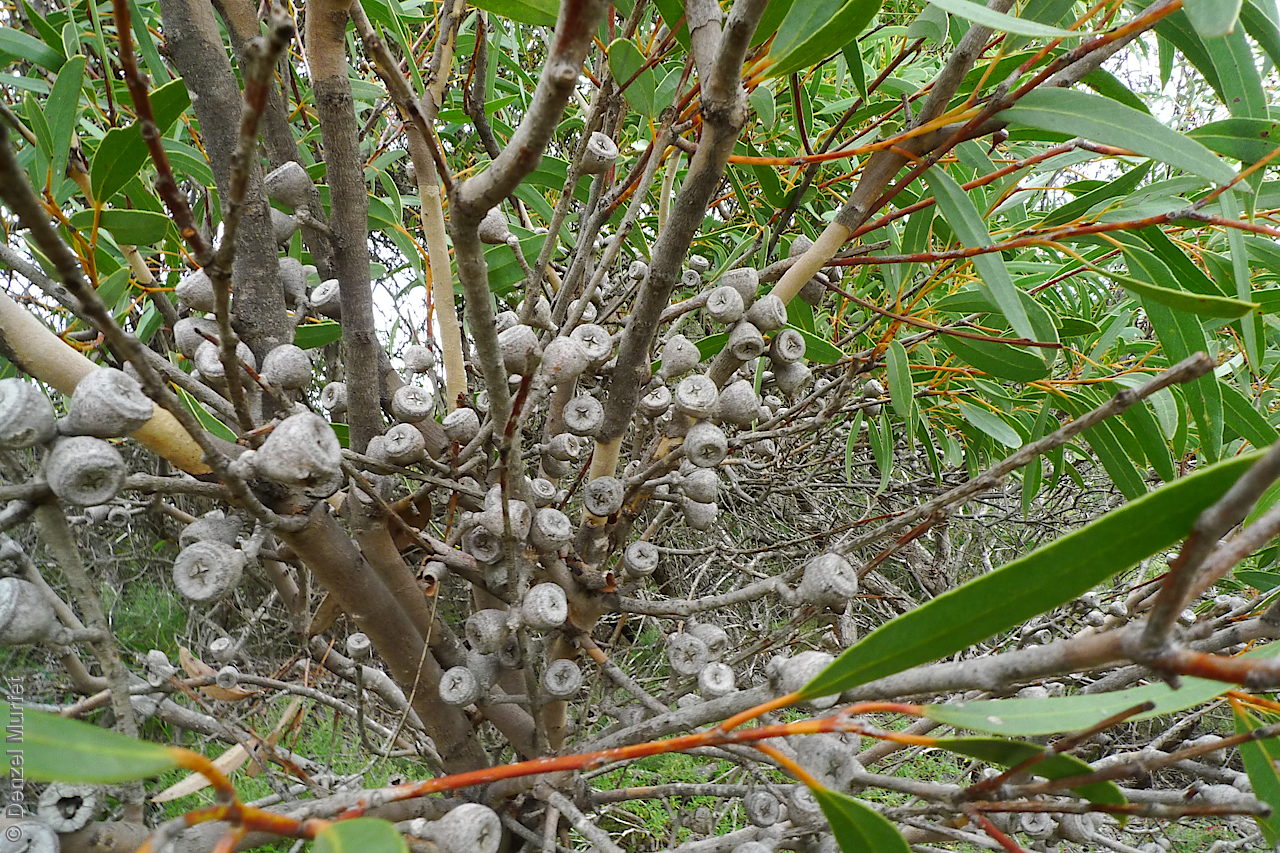
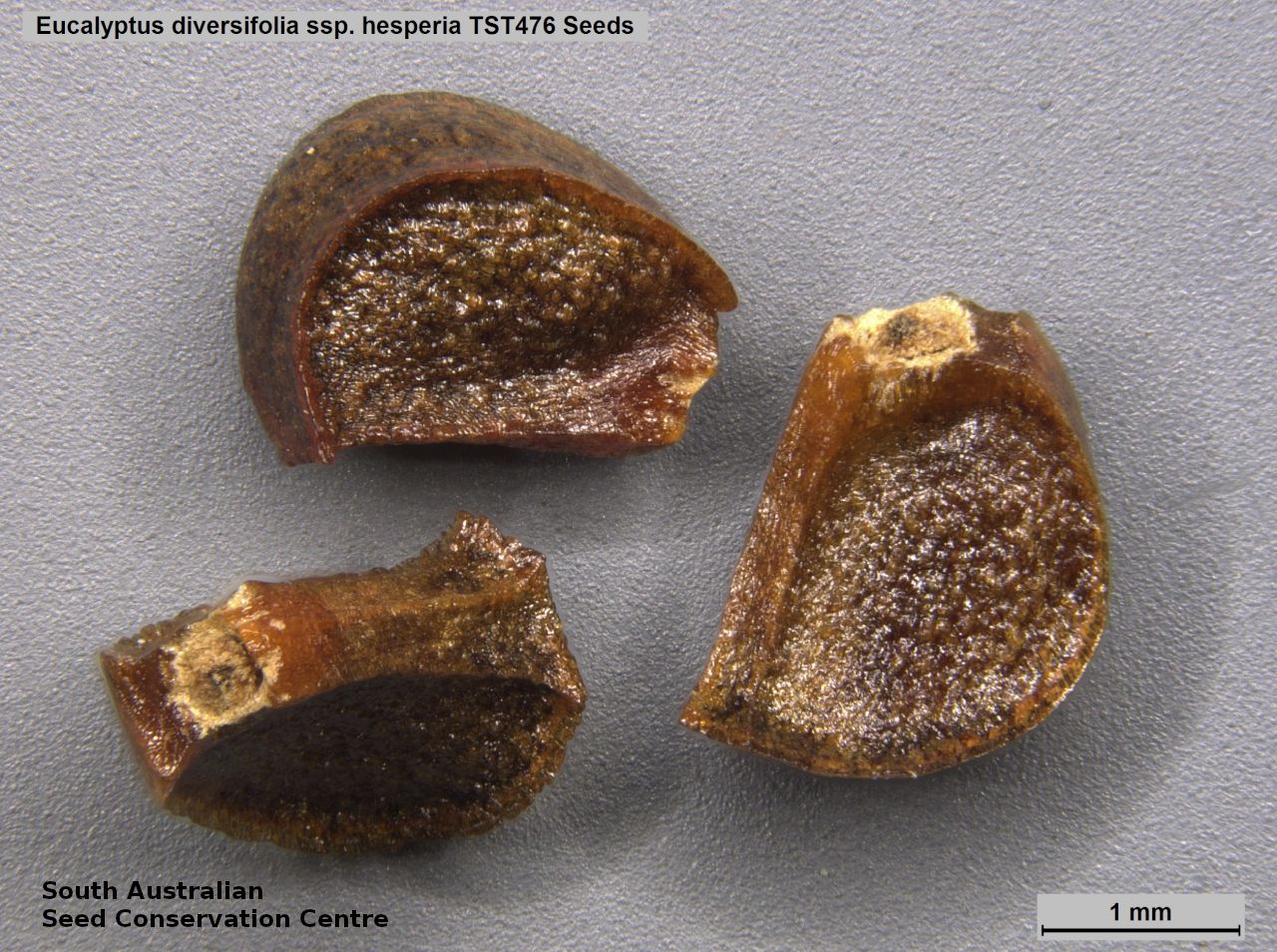
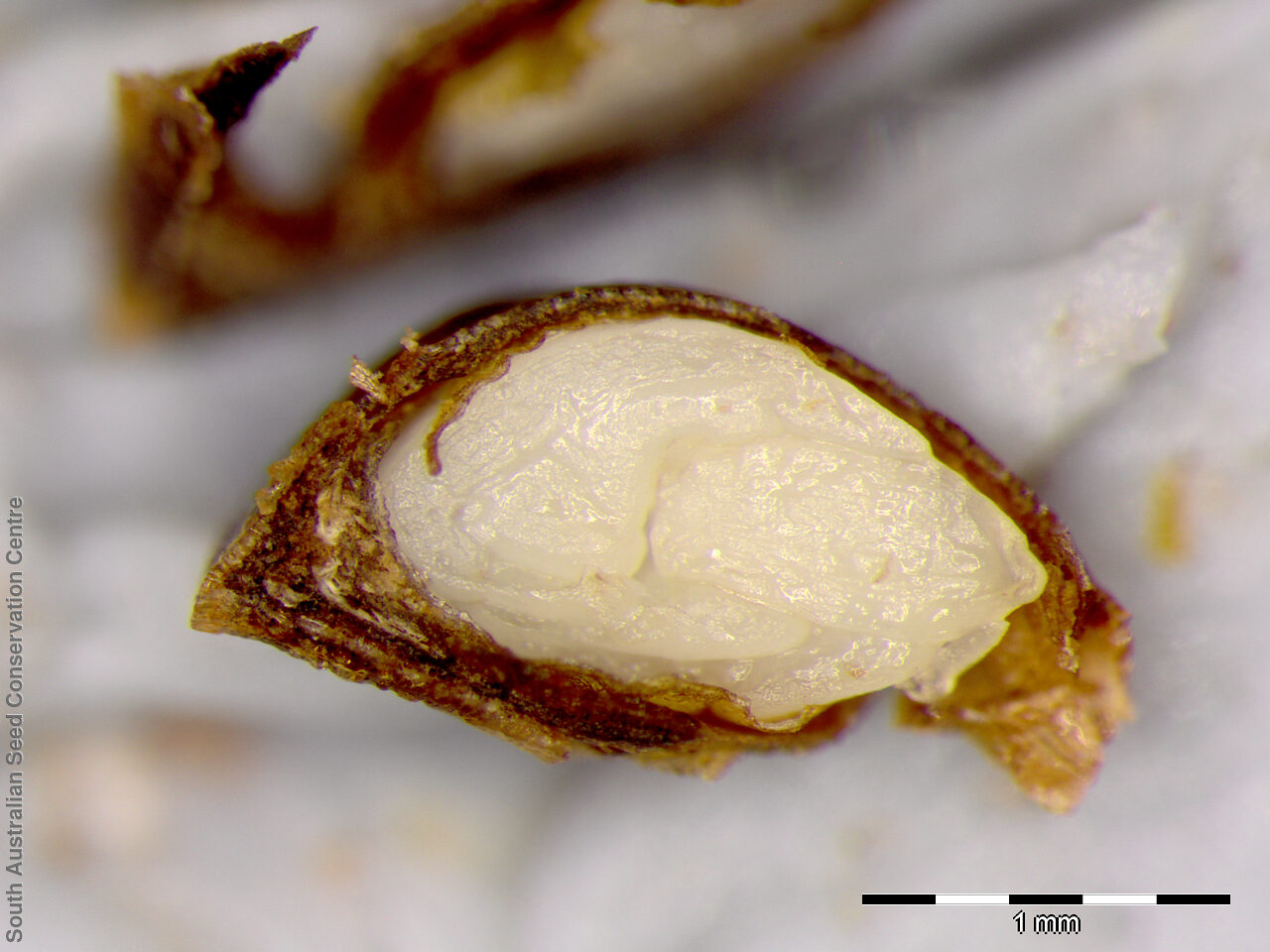


Botanical art
Prior names
Eucalyptus diversifolia, partly
Common names
Wylie Scarp Mallee
Coastal White Mallee
Soap Mallee
Etymology
Eucalyptus from the Greek 'eu' meaning well and 'calyptos' meaning covered; alluding to the cap or lid which covers the stamens in the bud. Diversifolia from the Latin 'diversus' meaning diverse and 'folium' meaning a leaf; referring to the species different juvenile and adult leaf stages. Hesperia from the Latin 'hesperis' meaning western; referring to the subspecies western distribution.
Distribution and status
Found on the coast escarpment on the far western of the Nullarbor Plain in South Australia, growing well-drained areas on pure limestone or on loose white sand over limestone. Also found in Western Australia. Native. Rare in South Australia. Uncommon in Western Australia.
Herbarium region: Nullarbor
NRM region: Alinytjara Wilurara
AVH map: SA distribution map (external link)
Plant description
Multi-stemmed, often dense-crowned mallee to 5 m high with smooth bark, pale-grey when fresh, becoming dark and shedding in strips. Juvenile leaves to 30 mm wide, opposite, sessile, ovate to broad-lanceolate, dull to glossy, green to blue-green. Adult leaves to 115 mm long and 18 mm wide, narrow-lanceolate to falcate, dull to glossy, dark green to blue-green. Flowers in group of 7-11 in leaf axils. Buds to 12 mm long and 7 mm wide, smooth, egg-shaped to diamond-shaped, bud-cap, about as long as or longer than the base. Flowers creamy-white appearing in winter and spring. This subspecies differ from Eucalyptus diversifolia ssp. diversifolia which has a more broader juvenile and adult leaves, larger fruits and level to ascending discs. Fruits are cup-shaped to cone-shaped to 9 mm long and 11 mm wide, disk level to slightly ascending, valves 3 or 4st rim level. Seeds are orange-brown sectoroid or pyramid-shaped seed. Seed embryo type is folded.
Seed collection and propagation
Collect seeds between January and December. Collect mature fruits that are dark and hard (difficult to break with a finger nail), with the valves un-open any time of year. Leave the fruits in a breathable container in a dry room for one to two weeks. This allows the valves on the fruit to open and release the seeds. Separate the seeds by placing all the materials into a bucket and shaking it to dislodge the seeds. Pass the material through a sieve to separate the unwanted material. The finer material will contain both seeds (soft) and frass (hard) usually distinguishable from each other but can be very similar in shape and colour. With finer sieves, the seeds can be separated from the frass but this is not essential for storage or propagation. Store the seeds with a desiccant such as dried silica beads or dry rice, in an air tight container in a cool and dry place. From one collection, the seed viability was high, at 100%. Seeds are non-dormant, viable seed should germinate readily.
| Location | No. of seeds (weight grams) | Number of plants | Date collected | Collection number Collection location | Date stored | % Viability | Storage temperature |
|---|---|---|---|---|---|---|---|
| BGA | 41,000 (57.54 g) | 20 | 8-Sep-2008 | TST476 Nullarbor | 20-Jul-2009 | 100% | -18°C |
Number of plants: This is the number of plants from which the seeds were collected.
Collection location: The Herbarium of South Australia's region name.
% Viability: Percentage of filled healthy seeds determined by a cut test or x-ray.